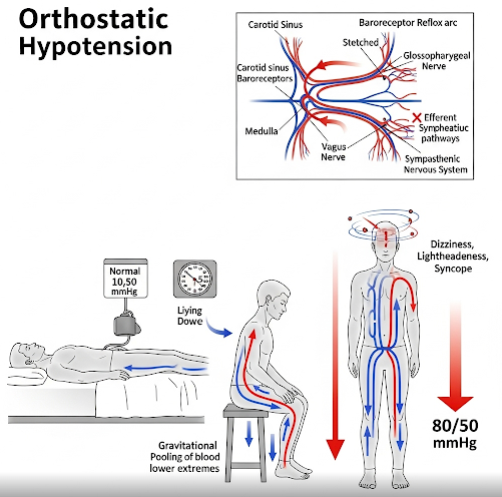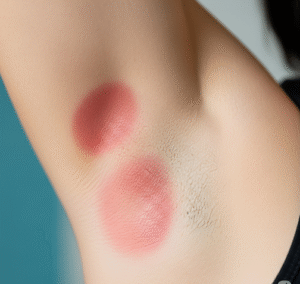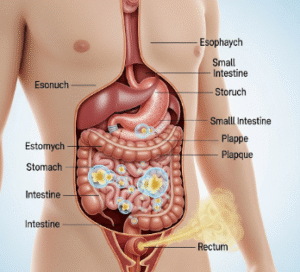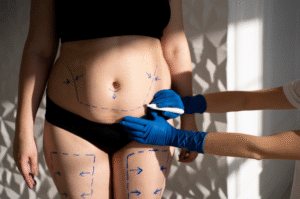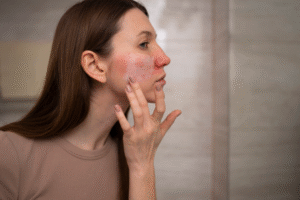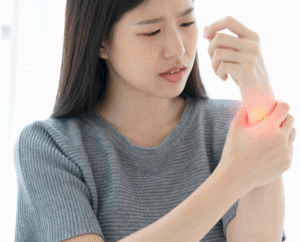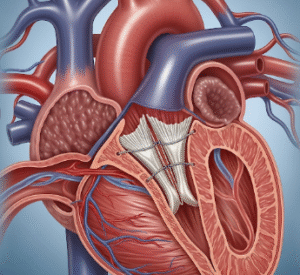Overview
Orthostatic hypotension, also known as postural hypotension, is a condition characterized by a sudden drop in blood pressure when a person stands up from a sitting or lying position. This can cause dizziness, lightheadedness, fainting, and falls. It often results from problems with the autonomic nervous system, dehydration, or underlying medical conditions. Managing orthostatic hypotension is important to prevent injury and improve quality of life.
What is Orthostatic Hypotension?
Orthostatic hypotension occurs when the body fails to adequately adjust blood pressure upon standing, leading to insufficient blood flow to the brain. Normally, the body compensates by constricting blood vessels and increasing heart rate, but in this condition, these responses are impaired or delayed. It can be acute or chronic and affects people of all ages but is more common in older adults.
Symptoms
- Dizziness or lightheadedness upon standing
- Blurred vision
- Weakness
- Fainting (syncope) or near-fainting episodes
- Confusion or difficulty concentrating
- Nausea
- Fatigue
- Headache
Causes
Orthostatic hypotension can be caused by various factors, including:
- Dehydration or blood loss
- Medications such as diuretics, beta-blockers, or antidepressants
- Autonomic nervous system disorders (e.g., Parkinson’s disease, diabetic neuropathy)
- Prolonged bed rest or immobility
- Heart conditions like arrhythmias or heart failure
- Endocrine disorders such as adrenal insufficiency
- Aging-related changes in blood vessel elasticity
Risk Factors
- Advanced age
- Chronic illnesses like diabetes and Parkinson’s disease
- Use of certain medications
- Recent surgery or hospitalization
- Alcohol use
- Malnutrition or anemia
- Prolonged standing or rapid position changes
Complications
- Falls leading to fractures or head injuries
- Persistent dizziness affecting daily activities
- Reduced quality of life due to fear of standing or moving
- Increased risk of cardiovascular events in some cases
- Hospitalization due to injuries or underlying causes
Prevention
- Rise slowly from sitting or lying positions
- Stay well-hydrated
- Avoid alcohol and large meals that can lower blood pressure
- Wear compression stockings to improve circulation
- Review medications with a healthcare provider
- Engage in regular physical activity as tolerated
- Elevate the head of the bed during sleep
Treatment Option in Korea
South Korea offers comprehensive diagnosis and treatment for orthostatic hypotension through specialized cardiovascular and neurology clinics. Treatment focuses on managing underlying causes and symptom relief, including:
- Adjusting or changing medications that contribute to low blood pressure
- Increasing fluid and salt intake when appropriate
- Use of medications like fludrocortisone or midodrine to raise blood pressure
- Physical therapy and balance training to prevent falls
- Monitoring and managing comorbid conditions such as diabetes or Parkinson’s disease
Leading hospitals such as Severance Hospital, Samsung Medical Center, and Asan Medical Center provide multidisciplinary care with experienced neurologists, cardiologists, and rehabilitation specialists. Korean medical centers also offer patient education and tailored management plans for long-term care.

